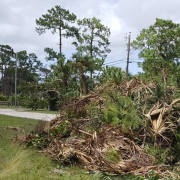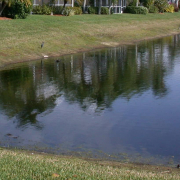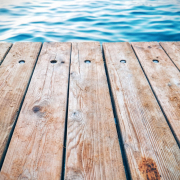Not Your Trash Bin
The Lake Worth Drainage District (LWDD) canal system is not a place for disposing of waste. It is illegal to dump, discard, or dispose of vegetative debris or trash in the LWDD canals or along the rights-of-way. Under Florida’s Litter Law (Florida Statute 403.413) anyone who dumps material on public or private property can face fines and possible jail time. For example, dumping between 15 and 500 pounds of material for non-commercial purposes is classified as a first-degree misdemeanor, which can result in fines up to $1,000 and imprisonment for up to one year. The penalties increase with the weight and volume of the dumped material.
Within the LWDD’s service area, illegally dumped materials typically consist of non-hazardous solid waste that people find inconvenient or costly to dispose of properly. Common items include household trash, furniture, appliances, tires, and vegetative debris from lawn care and tree trimming. Offenders often include residents, contractors (in construction and landscaping), waste haulers, and automobile repair shops.
Negative Impacts of Illegal Dumping
Illegal dumping can lead to various negative consequences, affecting public safety, the environment, and the local economy. For example, dumping in drainage canals can reduce their ability to control flooding and put nearby residents at risk. Trash discarded along canal rights-of-way can also obstruct access for routine maintenance or emergency response during severe weather events.
While landfills are designed to prevent waste from leaching into the ground or nearby water sources, illegal dumping does not have such protections and can contaminate local water and land. Additionally, illegal dumping creates an eyesore that lowers property values in surrounding areas. Local governments are forced to allocate resources for cleanup and pollution remediation, which places a financial burden on the community.
Reporting Illegal Dumping
If you witness illegal dumping in progress, contact your local law enforcement immediately. Catching offenders in the act is the most effective way to enable police to apprehend them and deter future violations. Never confront someone who is dumping. Instead, take note of the vehicle’s license plate number or a description of the vehicle used.
Please help us raise awareness about the importance of proper trash disposal by sharing this information with your neighbors. For more information on the proper disposal of trash, visit the Palm Beach County Solid Waste Authority at www.swa.org. They have information on how to properly discard of all waste.






